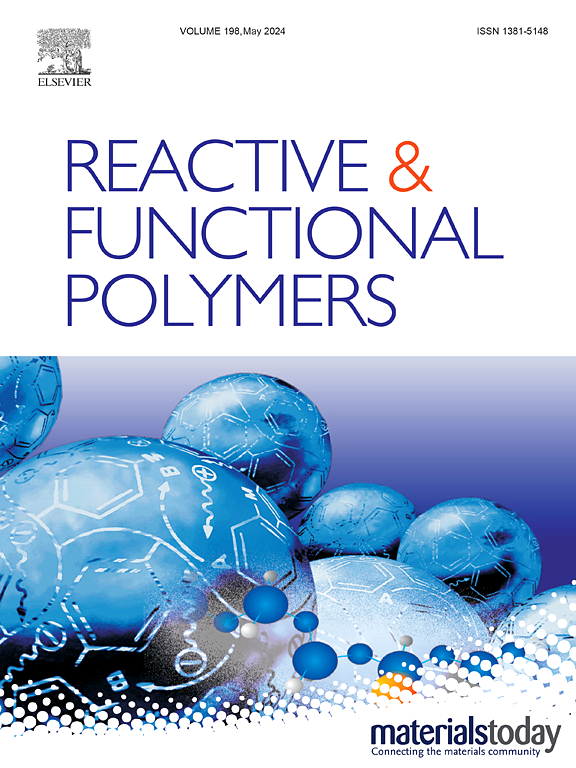基于1,1,3,3-四甲基胍(TMG)催化的端溴化聚酯的合成及聚合后功能化研究
IF 4.5
3区 工程技术
Q1 CHEMISTRY, APPLIED
引用次数: 0
摘要
本研究探讨了用1,1,3,3-四甲基胍(TMG)促进二羧酸和二溴化物之间的聚合反应合成功能化聚酯的方法。传统聚酯由于缺乏官能团而面临限制,阻碍了其生物医学用途。tmg介导的方法可以在温和的条件下进行高效聚合,生产具有活性溴末端的线性和超支化聚酯。这些溴端化聚酯作为聚合后修饰的多功能前体,允许引入多种功能(例如,刺激反应性,荧光,药物偶联),并创建嵌段共聚物,水凝胶和聚合物-药物偶联物。该平台展示了广泛的单体兼容性、可扩展性和可调性,使其在药物输送、组织工程和多功能生物材料等应用中具有前景。本文章由计算机程序翻译,如有差异,请以英文原文为准。

Synthesis and post-polymerization functionalization of bromide-terminated polyesters via 1,1,3,3-tetramethylguanidine (TMG)-promoted polyesterification for biomedical applications
This study explores the synthesis of functionalized polyesters using 1,1,3,3-tetramethylguanidine (TMG)-promoted polyesterification between dicarboxylic acids and dibromides. Traditional polyesters face limitations due to a lack of functional groups, hindering their biomedical utility. The TMG-mediated method enables efficient polymerization under mild conditions, producing linear and hyperbranched polyesters with reactive bromide termini. These bromide-terminated polyesters serve as versatile precursors for post-polymerization modifications, allowing the introduction of diverse functionalities (e.g., stimuli-responsiveness, fluorescence, drug conjugation) and the creation of block copolymers, hydrogels, and polymer-drug conjugates. The platform demonstrates broad monomer compatibility, scalability, and tunability, making it promising for applications such as drug delivery, tissue engineering, and multifunctional biomaterials.
求助全文
通过发布文献求助,成功后即可免费获取论文全文。
去求助
来源期刊

Reactive & Functional Polymers
工程技术-高分子科学
CiteScore
8.90
自引率
5.90%
发文量
259
审稿时长
27 days
期刊介绍:
Reactive & Functional Polymers provides a forum to disseminate original ideas, concepts and developments in the science and technology of polymers with functional groups, which impart specific chemical reactivity or physical, chemical, structural, biological, and pharmacological functionality. The scope covers organic polymers, acting for instance as reagents, catalysts, templates, ion-exchangers, selective sorbents, chelating or antimicrobial agents, drug carriers, sensors, membranes, and hydrogels. This also includes reactive cross-linkable prepolymers and high-performance thermosetting polymers, natural or degradable polymers, conducting polymers, and porous polymers.
Original research articles must contain thorough molecular and material characterization data on synthesis of the above polymers in combination with their applications. Applications include but are not limited to catalysis, water or effluent treatment, separations and recovery, electronics and information storage, energy conversion, encapsulation, or adhesion.
 求助内容:
求助内容: 应助结果提醒方式:
应助结果提醒方式:


